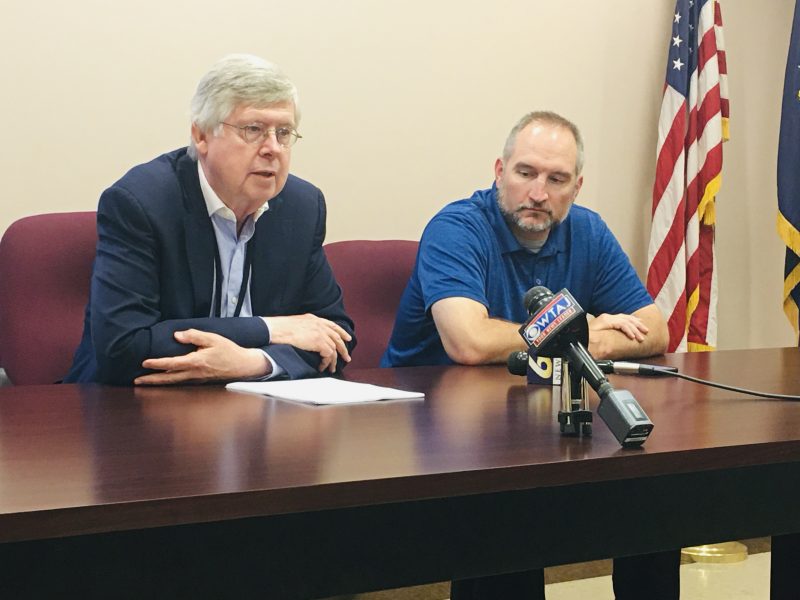CLEARFIELD – The state Environmental Hearing Board on Thursday granted Clearfield County’s motion for summary judgment in its appeal of the PA Waste solid waste permit for the proposed Camp Hope Run landfill.
The permit was vacated and remanded back to the state Department of Environmental Protection (DEP) for further evaluation of a few issues — origin of waste, site suitability and public notice.
[PA Waste] “did not provide any information in its permit application on the geographic origin of the waste it will be accepting, as unequivocally required by the regulations,” wrote Judge Bernard A. Labuskes Jr. in his opinion.
“In addition, the permittee and the department failed to properly consider alternative locations for the new landfill, and the department failed to properly publish a justification for overriding the host county’s recommendation that the permit be denied.
“The board vacates the permit and remands it back to the department for further consideration.”
The EHB’s decision was announced Friday by Clearfield County Commissioners John A. Sobel, board chairman, and Dave Glass, who declared a “solid win” for the county and its citizens in the Boggs Township landfill fight.
“Summary judgment motions are not usually granted,” Sobel said. “After review, there were no disputed facts … it’s a great day for Clearfield County and the citizens of Clearfield County.”
“… The citizens have been – by a very wide margin – opposed to the landfill,” added Glass. “Some of those citizens, along with various county personnel, have been very involved for a very long time with this dispute.”
“I’m very pleased with the Environmental Hearing Board’s decision,” Commissioner Tony Scotto said in correspondence with GANT News on Friday afternoon.
“I honestly never felt that the permit was valid … or that DEP took the county’s objections to the landfill very seriously. This is a great result for Clearfield County.”
PA Waste and or DEP may choose to appeal the decision of the EHB, or PA Waste can resurrect its permit request with DEP and address identified issues.
“We hope they do not,” Sobel said, “but are prepared to defend again.”
Background
According to previously-published articles, PA Waste of Feasterville, Bucks County, originally submitted its landfill permit application to the DEP in September of 2006.
The first permit proposed for a new, double-lined 221-acre municipal waste landfill. It was proposed to accept 5,000 tons of municipal waste per day, and was to operate for about 25 years.
The landfill application passed the harms-versus-benefits phase of the permit application process with the state Department of Environmental Protection.
However, in 2013 during the technical review portion of the application process, the DEP determined the landfill application had 71 deficiencies and gave PA Waste three months to address the issues.
The deficiencies identified by DEP included the lack of a traffic study, the wetland review was not completed, soil information had not yet been submitted and the DEP wanted additional data supporting the landfill would not contaminate the groundwater in the area.
After several deadline extensions, DEP rejected the application in April of 2015. The company filed an appeal to the ruling to the Environmental Hearing Board. In spring of 2016, PA Waste withdrew both its appeal and its original permit application for the proposed landfill.
PA Waste then submitted a new Phase I Waste Management Application to DEP on June 30, 2017 and the Phase II application on Feb. 26, 2018.
According to previously-published articles, on Jan. 28,2020, DEP agreed to issue a permit to PA Waste for the landfill. The commissioners subsequently voted to have their attorney appeal the decision.
PA Waste proposed a new 5,000 tons per day, double-lined, municipal waste landfill. It proposed locating the landfill and supporting facilities within an 845-acre facility boundary about seven miles southeast of Clearfield, along the west side of state Route 153 in Boggs Township.
PA Waste proposed waste disposal limits to encompass about 217 acres, with support facilities and buffer areas within the remainder of the overall facility boundary.
